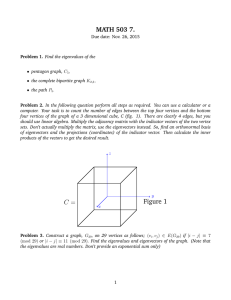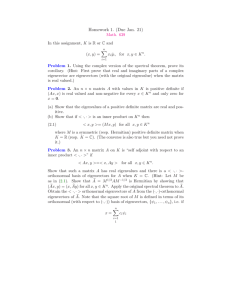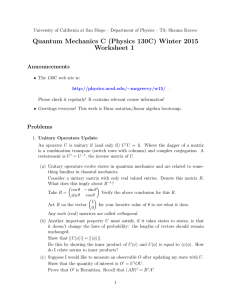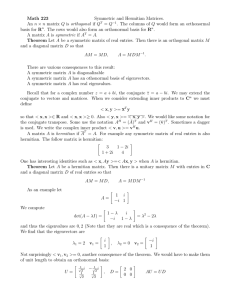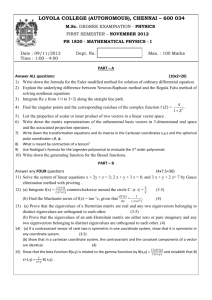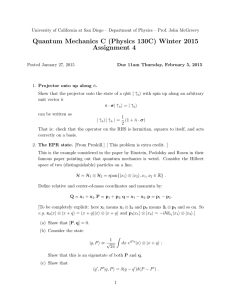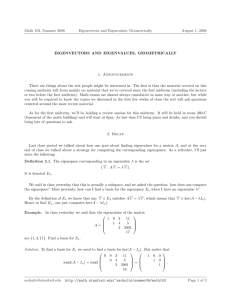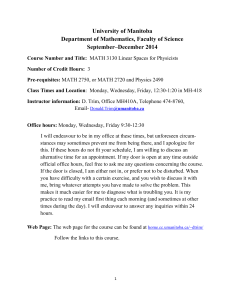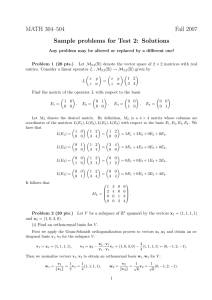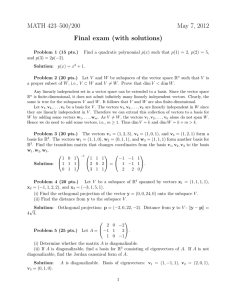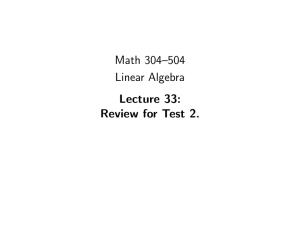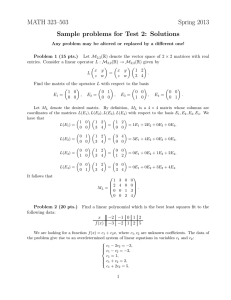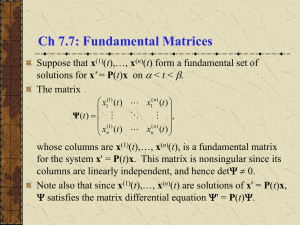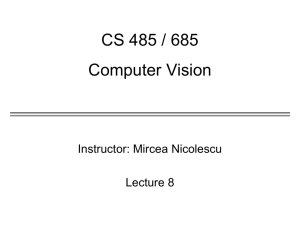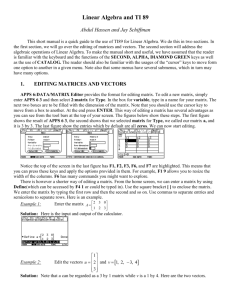240 Linear Algebra Review for the Final Test
advertisement
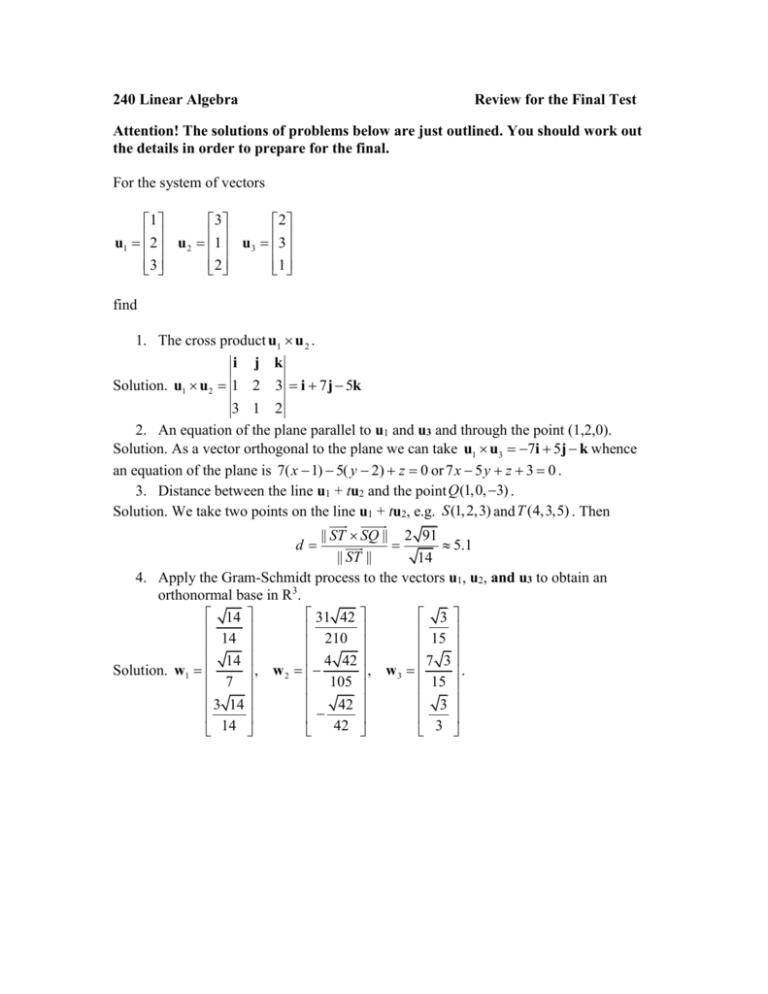
240 Linear Algebra Review for the Final Test Attention! The solutions of problems below are just outlined. You should work out the details in order to prepare for the final. For the system of vectors 1 3 2 u1 2 u 2 1 u3 3 3 2 1 find 1. The cross product u1 u 2 . i j k Solution. u1 u2 1 2 3 i 7 j 5k 3 1 2 2. An equation of the plane parallel to u1 and u3 and through the point (1,2,0). Solution. As a vector orthogonal to the plane we can take u1 u3 7i 5j k whence an equation of the plane is 7( x 1) 5( y 2) z 0 or 7 x 5 y z 3 0 . 3. Distance between the line u1 + tu2 and the point Q (1,0, 3) . Solution. We take two points on the line u1 + tu2, e.g. S (1, 2,3) and T (4,3,5) . Then || ST SQ || 2 91 5.1 || ST || 14 4. Apply the Gram-Schmidt process to the vectors u1, u2, and u3 to obtain an orthonormal base in R3. 31 42 3 14 210 15 14 4 42 7 3 14 Solution. w1 , w3 . , w2 7 105 15 3 3 14 42 14 42 3 d 5. The matrix of a linear transformation A: R3 R3 in the standard basis is 3 2 1 1 1 1 1 0 3 Find (a) Rank and Nullity of A, (b) a basis in ker(A), (c) a basis in the range of A. Solution. The rank is 2 whence the nullity is 1. To find a basis in ker A we solve the homogeneous system 3x 2 y z 0 x yz0 x 3z 0 It is easy to see that x 3z and y 4 z whence a basis in ker A is the vector 3i 4 j k . The dimension of the range is 2 so any basis will consist of two vectors. We can take for example the vectors u1 Ai 3i j k and u2 Aj 2i j . 6. Find eigenvectors, eigenvalues, and orthogonal diagonalization of the matrix 1 2 2 A 2 1 0 2 0 1 Solution. Eigenvalues: 3, -1, 3. Corresponding orthonormal eigenvectors: 1 2 3 0 6 1 1 1 3 , 2 , 6 , 1 1 1 3 2 6 Then P 1 3 1 3 1 3 0 1 2 1 2 2 6 3 0 0 1 1 T and P AP P AP 0 1 0 . 6 0 0 3 1 6 7. What kind of matrix (Hermitian, unitary, normal, neither) is 1 i B ? i 1 Explain why or why not. 1 i Solution. B* i 1 Therefore the matrix B is neither Hermitian ( B B* ) nor unitary (because B1 B* ). 2 0 It is normal because B*B BB* 0 2 8. Diagonalize matrix B, if possible find a unitary diagonalization, if not explain why. Solution. The matrix can be unitary diagonalized because it is normal. Characteristic equation: ( 1)2 1 0 ; eigenvalues: 1 i, 1 i ; corresponding orthonormal 1 1 1 1 2 2 2 0 1 i 2 1 , ; U eigenvectors: ; U BU U * BU . 1 1 1 1 0 1 i 2 2 2 2
